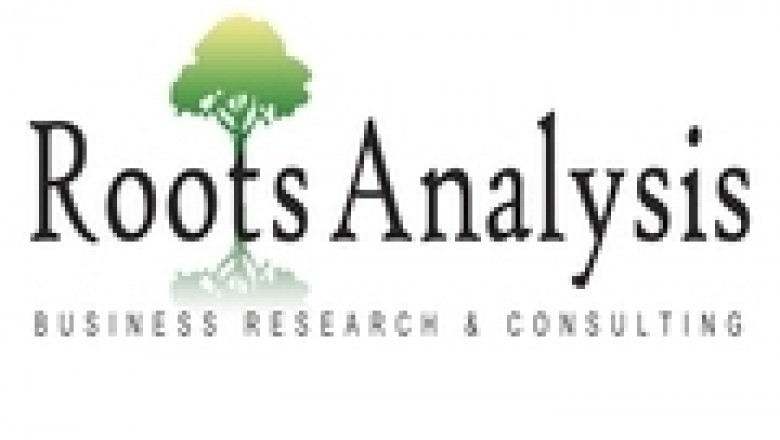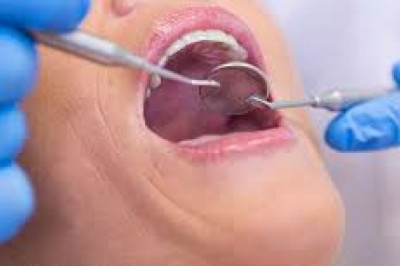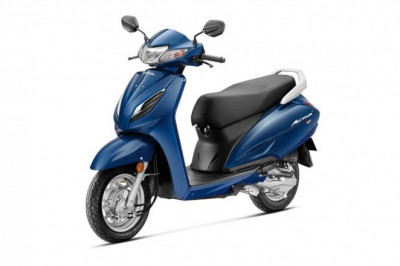views

Roots Analysis has done a detailed study on Biopharma Contract ManufacturingMarket (3rd Edition), 2019-2030, covering key aspects of the industry’s evolution andidentifying potential future growth opportunities.
To order this 750+ page report, which features 200+ figuresand 250+ tables, please visit this link
Key Market Insights
§ Over 235 companies worldwide claim to offer contractmanufacturing services for various types of biopharmaceutical drug / therapyproducts.
§ The market landscape is highly fragmented featuring thepresence of both established players and new entrants; majority ofbiopharmaceutical CMOs are based in the developed geographies.
§ Case study: CMOs focusing on niche biologic markets,primarily novel product candidates for which in-house biomanufacturingexpertise is low, are likely to experience significant growth in the comingyears.
§ The installed global contract manufacturing capacity,spread across various geographies, is currently estimated to be over 4.5million liters.
§ The demand for contractmanufacturing services is expected to rise across different therapeutic areas;closer inspection of available capacity and expected utilization trend arerequired to optimize supply parameters.
§ With over 450 deals inked in the past six years, there hasbeen a surge in the partnership activity; majority of the collaborations havebeen signed for the development and manufacturing of cell therapies andantibodies.
§ In order to cater the increasingdemand for biologics, stake holders are actively expanding their existingcapabilities; this is evident from the various acquisitions that have recentlybeen reported.
§ We expect the developers to continue to outsource theirmanufacturing operations in the short to mid-term, resulting in an annualizedgrowth rate of more than 8%.
§ In the long term, the projected opportunity is anticipatedto be well distributed across various types of expression systems used forbiomanufacturing, scale of operation and size of contract service providers
For more information, please visit https://rootsanalysis.com/reports/view_document/biopharma-contract-manufacturing-market-3rd-edition-2019-2030/250.html
Table of Contents
1. PREFACE
1.1. Scope of the Report
1.2. Research Methodology
1.3. Chapter Outlines
2. EXECUTIVESUMMARY
3. INTRODUCTION
3.1. Context andBackground
3.2. An Overviewof Biopharmaceuticals
3.3. BiopharmaceuticalManufacturing
3.3.1. Types ofExpression Systems
3.3.1.1. BacterialExpression Systems
3.3.1.2. Yeast ExpressionSystems
3.3.1.3. FungalExpression Systems
3.3.1.4. InsectExpression Systems
3.3.1.5. Plant Expression Systems
3.3.1.6. Mammalian Expression Systems
3.3.2. ManufacturingSteps
3.3.2.1. UpstreamProcessing
3.3.2.2. Downstream Processing
3.4. An Overviewof Contract Manufacturing
3.5. Need forOutsourcing in the Biopharmaceutical Industry
3.6. CommonlyOutsourced Operations in the Biopharmaceutical Industry
3.7. BasicGuidelines for Selecting a CMO Partner
3.8. Advantagesof Outsourcing Manufacturing Services
3.9. Risks andChallenges Associated with Biopharmaceutical Contract Manufacturing
3.10. ConcludingRemarks
4. COMPETITIVE LANDSCAPE
4.1. ChapterOverview
4.2. BiopharmaceuticalsContract Manufacturers: Overall Market Landscape
4.2.1. Analysis bySize of Employee Base
4.2.2. Analysis byLocation of Headquarters
4.2.3. Analysis byYear of Establishment
4.2.4. Analysis byLocation of Manufacturing Facilities
4.2.5. Analysis byType of Biologics Manufactured
4.2.6. Analysis byScale of Operation
4.2.7. Analysis byExpression Systems
4.2.8. Analysis byType of Bioreactor and Modes of Operation
4.2.9. Analysis byBiomanufacturing Capacity
4.2.10. Analysis byPackaging Form
4.3. ConcludingRemarks
5. BIOPHARMACEUTICAL CONTRACT MANUFACTURINGIN NORTH AMERICA
5.1. ChapterOverview
5.2. BiopharmaceuticalOutsourcing in the US: Regulatory Scenario
5.2.1. Impact ofCurrent Political Situation
5.3. LeadingBiopharma CMOs in North America
5.3.1. AMRI(OsoBio)
5.3.1.1. CompanyOverview
5.3.1.2. ServicesPortfolio
5.3.1.3. FinancialInformation
5.3.1.4. ManufacturingFacilities
5.3.1.5. Partnerships
5.3.1.6. RecentDevelopments
5.3.1.7. FutureOutlook
5.3.2. Baxter BioPharmaSolutions
5.3.2.1. CompanyOverview
5.3.2.2. ServicesPortfolio
5.3.2.3. FinancialInformation
5.3.2.4. ManufacturingFacilities
5.3.2.5. Partnerships
5.3.2.6. RecentDevelopments
5.3.2.7. FutureOutlook
5.3.3. CatalentBiologics (Catalent Pharma Solutions)
5.3.3.1. CompanyOverview
5.3.3.2. ServicesPortfolio
5.3.3.3. FinancialInformation
5.3.3.4. ManufacturingFacilities
5.3.3.5. Partnerships
5.3.3.6. RecentDevelopments
5.3.3.7. FutureOutlook
5.3.4. CytovanceBiologics
5.3.4.1. CompanyOverview
5.3.4.2. ServicesPortfolio
5.3.4.3. Partnerships
5.3.4.4. RecentDevelopments
5.3.4.5. FutureOutlook
5.3.5. Patheon
5.3.5.1. Company Overview
5.3.5.2. ServicesPortfolio
5.3.5.3. FinancialInformation
5.3.5.4. ManufacturingFacilities
5.3.5.5. Partnerships
5.3.5.6. RecentDevelopments
5.3.5.7. FutureOutlook
5.3.6. PiramalPharma Solutions
5.3.6.1. CompanyOverview
5.3.6.2. ServicesPortfolio
5.3.6.3. FinancialInformation
5.3.6.4. Facilities
5.3.6.5. Partnerships
5.3.6.6. RecentDevelopments
5.3.6.7. FutureOutlook
6. BIOPHARMACEUTICALCONTRACT MANUFACTURING IN EUROPE
6.1. ChapterOverview
6.2. BiopharmaceuticalOutsourcing in Europe: Regulatory Scenario
6.3. LeadingBiopharmaceutical CMOs in Europe
6.3.1. 3PBiopharmaceuticals
6.3.1.1. CompanyOverview
6.3.1.2. ServicesPortfolio
6.3.1.3. ManufacturingFacilities
6.3.1.4. Partnerships
6.3.1.5. RecentDevelopments
6.3.1.6. FutureOutlook
6.3.2. BoehringerIngelheim BioXcellence™
6.3.2.1. CompanyOverview
6.3.2.2. ServicesPortfolio
6.3.2.3. FinancialInformation
6.3.2.4. ManufacturingFacilities
6.3.2.5. Partnerships
6.3.2.6. RecentDevelopments
6.3.2.7. FutureOutlook
6.3.3. Celonic
6.3.3.1. CompanyOverview
6.3.3.2. ServicesPortfolio
6.3.3.3. ManufacturingFacilities
6.3.3.4. Partnerships
6.3.3.5. RecentDevelopments
6.3.3.6. FutureOutlook
6.3.4. FUJIFILMDiosynth Biotechnologies
6.3.4.1. CompanyOverview
6.3.4.2. ServicesPortfolio
6.3.4.3. FinancialInformation
6.3.4.4. ManufacturingCapabilities
6.3.4.5. Partnerships
6.3.4.6. RecentDevelopments
6.3.4.7. FutureOutlook
6.3.5. LFB Group
6.3.5.1. CompanyOverview
6.3.5.2. ServicesPortfolio
6.3.5.3. FinancialInformation
6.3.5.4. ManufacturingFacilities
6.3.5.5. Partnerships
6.3.5.6. RecentDevelopments
6.3.5.7. FutureOutlook
6.3.6. Lonza
6.3.6.1. CompanyOverview
6.3.6.2. ServicesPortfolio
6.3.6.3. FinancialInformation
6.3.6.4. ManufacturingFacilities
6.3.6.5. Partnerships
6.3.6.6. Recent Developments
6.3.6.7. FutureOutlook
6.3.7. MenariniBiotech
6.3.7.1. CompanyOverview
6.3.7.2. ServicesPortfolio
6.3.7.3. Partnerships
6.3.7.4. FutureOutlook
6.3.8. Novasep
6.3.8.1. CompanyOverview
6.3.8.2. ServicesPortfolio
6.3.8.3. Financial Information
6.3.8.4. Partnerships
6.3.8.5. RecentDevelopments
6.3.8.6. FutureOutlook
6.3.9. RentschlerBioPharma
6.3.9.1. CompanyOverview
6.3.9.2. ServicesPortfolio
6.3.9.3. ManufacturingFacilities
6.3.9.4. Partnerships
6.3.9.5. Recent Developments
6.3.9.6. FutureOutlook
7. BIOPHARMACEUTICALCONTRACT MANUFACTURING IN ASIA PACIFIC AND THE REST OF THE WORLD
7.1. ChapterOverview
7.2. BiopharmaceuticalContract Manufacturing in China
7.2.1. BiopharmaceuticalOutsourcing in China: Regulatory Scenario
7.2.2. ChallengesFaced while Outsourcing to China
7.3. BiopharmaceuticalCMOs in China
7.3.1. AutekBio
7.3.1.1. CompanyOverview
7.3.1.2. ServicesPortfolio
7.3.1.3. ManufacturingFacilities
7.3.1.4. FutureOutlook
7.3.2. WuXi AppTec(WuXi Biologics)
7.3.2.1. CompanyOverview
7.3.2.2. ServicesPortfolio
7.3.2.3. FinancialInformation
7.3.2.4. ManufacturingFacilities
7.3.2.5. Partnerships
7.3.2.6. RecentDevelopments
7.3.2.7. FutureOutlook
7.4. BiopharmaceuticalContract Manufacturing in India
7.4.1. BiopharmaceuticalOutsourcing in India: Regulatory Scenario
7.4.2. ChallengesFaced while Outsourcing to India
7.5. BiopharmaceuticalCMOs in India
7.5.1. IntasPharmaceuticals
7.5.1.1. Company Overview
7.5.1.2. ServicesPortfolio
7.5.1.3. FinancialInformation
7.5.1.4. ManufacturingFacilities
7.5.1.5. FutureOutlook
7.5.2. KemwellBiopharma
7.5.2.1. CompanyOverview
7.5.2.2. ServicesPortfolio
7.5.2.3. ManufacturingFacilities
7.5.2.4. Partnerships
7.5.2.5. RecentDevelopments
7.5.2.6. FutureOutlook
7.5.3. ShasunPharmaceuticals
7.5.3.1. CompanyOverview
7.5.3.2. ServicesPortfolio
7.5.3.3. FinancialInformation
7.5.3.4. FutureOutlook
7.5.5. Syngene
7.5.5.1. Company Overview
7.5.5.2. ServicesPortfolio
7.5.5.3. FinancialInformation
7.5.5.4. ManufacturingFacilities
7.5.5.5. Partnerships
7.5.5.6. RecentDevelopments
7.5.5.7. FutureOutlook
7.6. BiopharmaceuticalContract Manufacturing in Japan
7.6.1. BiopharmaceuticalOutsourcing in Japan: Regulatory Scenario
7.6. BiopharmaceuticalCMOs in Japan
7.6.1. Asahi Glass
7.6.1.1. CompanyOverview
7.6.1.2. ServicesPortfolio
7.6.1.3. FinancialInformation
7.6.1.4. ManufacturingFacilities
7.6.1.5. Partnerships
7.7.1.6. RecentDevelopments
7.7.1.7. FutureOutlook
7.7. BiopharmaceuticalContract Manufacturing in South Korea
7.7.1. BiopharmaceuticalOutsourcing in South Korea: Regulatory Scenario
7.7. BiopharmaceuticalCMOs in South Korea
7.7.1. DM Bio
7.7.1.1. CompanyOverview
7.7.1.2. ServicesPortfolio
7.7.1.3. ManufacturingFacilities
7.7.1.4. FutureOutlook
7.7.2. SamsungBioLogics
7.7.2.1. CompanyOverview
7.7.2.2. ServicesPortfolio
7.7.2.3. FinancialInformation
7.7.2.4. ManufacturingFacilities
7.7.2.5. Partnerships
7.7.2.6. RecentDevelopments
7.7.2.7. FutureOutlook
7.8. Biopharmaceutical ContractManufacturing in Australia
7.8.1. BiopharmaceuticalOutsourcing in Australia: Regulatory Scenario
7.8. BiopharmaceuticalCMOs in Australia
7.8.2. CellTherapies
7.8.2.1. CompanyOverview
7.8.2.2. ServicesPortfolio
7.8.2.3. ManufacturingFacilities
7.8.2.4. Partnerships
7.8.2.5. RecentDevelopments
7.8.2.6. FutureOutlook
7.8.3. Luina Bio
7.8.3.1. CompanyOverview
7.8.3.2. ServicesPortfolio
7.8.3.3. ManufacturingFacilities
7.8.3.4. Partnerships
7.8.3.5. FutureOutlook
8. NICHE BIOPHARMACEUTICAL SECTORS
8.1. ChapterOverview
8.2. AntibodyDrug Conjugates
8.2.1. Introduction
8.2.1.1. ManufacturingProcess
8.2.1.2. KeyTechnologies and Technology Providers
8.2.2. PipelineAnalysis
8.2.2.1. ADC Pipeline:Marketed and Clinical Molecules
8.2.2.2. ADC Pipeline:Preclinical and Discovery Stage Molecules
8.2.2.3. ADCManufacturing: Key Challenges
8.3. BispecificAntibodies
8.3.1. Introduction
8.3.1.1. TheBispecific Advantage
8.3.2. PipelineAnalysis
8.3.3. BispecificAntibody Technology Providers
8.3.4. ContractManufacturing Scenario
8.4. CellTherapies
8.4.1. Introduction
8.4.2. CurrentMarket Landscape
8.4.3. Cell TherapyManufacturing
8.4.4. Cell TherapyManufacturing Models
8.4.4.1. CentralizedManufacturing Model
8.4.4.2. DecentralizedManufacturing Model
8.4.5. Cell TherapyManufacturing: Key Challenges and Growth Drivers
8.4.6. ImportantFactors for Cell Therapy Manufacturing
8.4.6.1. Cell Characterization
8.4.6.2. Cost of Goods
8.4.7. ContractManufacturing Scenario
8.4.7.1. Analysis byType of Cells Manufactured
8.4.7.2. Analysis byScale of Operation
8.5. Gene Therapy
8.5.1. Introduction
8.5.2. GeneTherapy: Pipeline Analysis
8.5.2.1. Analysis byPhase of Development
8.5.2.2. Analysis byType of Vector
8.5.2.3. Analysis byTherapeutic Area
8.5.3. ContractManufacturing Market Landscape
8.5.3.1. Analysis by Location
8.5.3.2. Analysis byType of Viral Vector
8.5.3.3. Analysis byScale of Production
8.6. Plasmid DNA
8.6.1. Introduction
8.6.2. ContractManufacturing Market Landscape
8.6.3. Analysis byLocation of Manufacturing Facility
8.6.4. Analysis byScale of Production
9. CASE STUDY: OUTSOURCING OF BIOSIMILARS
9.1. ChapterOverview
9.2. Biosimilars:An Introduction
9.3. Biosimilars:Development Stages
9.4. RegulatoryRequirements for Licensing of Biosimilars
9.5. Need forOutsourcing Biosimilar Development and Manufacturing
9.6. Impact ofBiosimilars on the Global Contract Manufacturing Market
9.6.1. Region-wiseDistribution of Biosimilar Development / Manufacturing Activity
9.7. List ofBiosimilars Contract Manufacturing Service Provider
9.8. ChallengesAssociated with Biosimilar Outsourcing
10. CASE STUDY: COMPARISON OF SMALL ANDLARGE MOLECULE DRUGS / THERAPIES
10.1. ChapterOverview
10.2. SmallMolecule and Large Molecule Drugs / Therapies
10.2.1. Comparison ofGeneral Characteristics
10.2.2. Comparison ofKey Specifications
10.2.3. Comparison ofManufacturing Processes
10.2.4. Comparison ofKey Manufacturing Challenges
11. CASE STUDY ON IN-HOUSEMANUFACTURING
11.1. ChapterOverview
11.2. In-HouseManufacturing
11.2.1. BenefitsAssociated with In-House Manufacturing
11.2.2. RisksAssociated with In-House Manufacturing
11.3. Outsourcingin the Biomanufacturing Industry
11.3.1. Types ofOutsourcing Partners
11.4. ManufacturingApproaches Used for Approved Biologics (2016-2018)
11.4.1. ApprovedBiologics: Distribution by Size of Type of Manufacturing Approach
11.4.2. ApprovedBiologics: Distribution by Size of Developer and Type of Biologic
11.5. Choosing theRight Strategy: In-House Manufacturing versus Outsourcing
12. COLLABORATIONS
12.1. ChapterOverview
12.2. PartnershipModels
12.3. BiopharmaceuticalContract Manufacturing: List of Partnerships and Collaborations
12.3.1. Analysis byYear of Partnerships
12.3.2. Analysis byType of Partnerships
12.3.2.1. Year-Wise Trend of Product-based Agreements
12.3.2.2. Year-Wise Trend of Process-based Agreements
12.3.2.3. Year-Wise Trend of Licensing Agreements
12.3.2.4. Year-Wise Trend of Co-service Agreements /Ventures
12.3.2.5. Year-Wise Trend of R&D Agreements
12.3.2.6. Year-Wise Trend of Out-sourcing ServicesAgreements
12.3.3. Analysis byFocus Area
12.3.4. Analysis byType of Biologics
12.3.4.1. Analysis by Type of Biologic and Type ofPartnership Model
12.3.4.2. Analysis of Cell Therapy-related Deals by Yearand Type of Partnership Model
12.3.4.3. Analysis of Monoclonal Antibody-related Deals byYear and Type of Partnership Model
12.3.4.4. Analysis of Vaccine-related Deals by Year andType of Partnership Model
12.3.4.5. Analysis of Protein-related Deals by Year andType of Partnership Model
12.3.4.6. Analysis of Antibody Drug Deals by Year and Typeof Partnership Model
12.3.4.7. Analysis of Vector-related Deals by Year and Typeof Partnership Model
12.3.4.8. Analysis of Gene Therapy-related Deals by Yearand Type of Partnership Model
12.3.4.9. Analysis of Biosimilar-related Deals by Year andType of Partnership Model
12.3.4.10. Analysis of Other Biologic-related Deals by Typeof Partnership Model
12.3.4.11. Analysis by Type of Biologics and Geography
12.3.5. Analysis byTherapeutic Area
12.3.6. Analysis ofMost Active Players by Number of Partnerships
12.3.7. RegionalAnalysis
12.3.7.1. Intercontinental and Intracontinental Agreements
12.4. Mergers andAcquisitions
12.4.1. AcquisitionsModels
12.4.2. BiopharmaceuticalContract Manufacturing: Mergers and Acquisitions
12.4.3. CumulativeYear-wise Trend
12.4.4. Analysis byType of Acquisition
12.4.5. GeographicalActivity
12.4.5.1. Mergers and Acquisitions: Continent-wiseDistribution
12.4.5.2. Mergers and Acquisitions: Country-wiseDistribution
12.4.5.3. Mergers and Acquisitions: Intercontinental andIntracontinental Deals
12.4.6. Most ActiveAcquirers: Analysis by Number of Acquisitions
12.4.7 Mergers andAcquisitions: Distribution by Key Value Drivers and Type of Biologics
12.4.7.1. Mergers and Acquisitions: Analysis by Key ValueDrivers
12.4.7.2. Mergers and Acquisitions: Analysis by Key ValueDrivers and Year of Acquisition
12.4.7.3. Mergers and Acquisitions: Analysis by Type ofBiologics
12.4.7.4. Mergers and Acquisitions: Analysis by Type ofBiologics and Key Value Drivers
12.5. KeyAcquisitions: Deal Multiples
13. RECENT DEVELOPMENTS
13.1. ChapterOverview
13.2. BiopharmaContract Manufacturing Market: Facility Expansions
13.2.1. CumulativeYear-wise Distribution
13.2.2. Analysis byPurpose of Facility Expansion
13.2.3. Analysis byType of Biologics
13.2.4. Analysis byType of Biologics and Purpose of Expansion
13.2.5. Analysis byLocation of Manufacturing Facility
13.2.6. RegionalAnalysis
13.2.7. Most ActivePlayers: Analysis by Number of Recent Expansions
13.2.8. Analysis byHeadquarters and Purpose
13.2.9. FacilityExpansions: Pre-2015 and Post-2015
13.3. BiopharmaceuticalContract Manufacturing Market: Funding Instances
13.4. TechnologicalAdvancements
13.4.1. Single UseTechnology
13.4.2. ProcessAnalytical Technology (PAT)
13.4.3. ContinuousProcessing
13.4.3. Quality byDesign in Bioprocessing
13.3. BiopharmaceuticalContract Manufacturing Market: Funding Instances
13.4. TechnologicalAdvancements
13.4.1. Single UseTechnology
13.4.2. ProcessAnalytical Technology
13.4.3. ContinuousProcessing
13.4.4. Quality byDesign in Bioprocessing
14. CAPACITY ANALYSIS
14.1. ChapterOverview
14.2. Assumptionsand Methodology
14.3. BiopharmaceuticalContract Manufacturers: Global Production Capacity
14.3.1. Analysis bySize of the CMO
14.3.2. Analysis byExpression Systems
14.3.3. Analysis byScale of Operation
14.3.4. Analysis byRegion
14.3.4.1. Capacity Analysis: North America
14.3.4.2. Capacity Analysis: Europe
14.3.4.3. Capacity Analysis: Asia and Middle East
14.4. EmergingBiologics: Capacity Analysis
14.4.1. ADCManufacturing Installed Global Capacity: Regional Distribution
14.5. Cell TherapyManufacturing Capacity: Regional Distribution
14.6. ViralVectors Installed Manufacturer Capacity: Distribution by Location ofManufacturing Facility
14.7. ConcludingRemarks
15. DEMAND ANALYSIS
15.1. ChapterOverview
15.2. KeyAssumptions and Methodology
15.3. OverallAnnual Demand for Biopharmaceutical Market, 2019-2024
15.3.1. Analysis byTherapeutic Area
15.4. RelationshipBetween Annual Demand and Capacity
15.5. Demand forEmerging Novel Biologics
15.5.1. ADCs: OverallAnnual Demand
15.5.1. ADCs: Demandand Supply Analysis
16. MARKET FORECAST
16.1. ChapterOverview
16.2. ForecastMethodology and Key Assumptions
16.3. OverallBiopharmaceutical Contract Manufacturing Market, 2019-2030
16.3.1. BiopharmaceuticalContract Manufacturing Market for API Manufacturing, 2019-2030
16.3.2. BiopharmaceuticalContract Manufacturing Market for FDF Manufacturing, 2019-2030
16.4. Biopharmaceutical ContractManufacturing Market, 2019-2030: Distribution by Expression Systems Used
16.5. Biopharmaceutical Contract ManufacturingMarket, 2019-2030: Distribution by Scale of Operation
16.6. BiopharmaceuticalContract Manufacturing Market, 2019-2030: Distribution by Size of Manufacturers
16.7. BiopharmaceuticalContract Manufacturing Market, 2019-2030: Distribution by Geography
16.7.1. BiopharmaceuticalContract Manufacturing Market in North America, 2019-2030
16.7.1.1. Biopharmaceutical Contract Manufacturing Marketin the US, 2019-2030
16.7.1.2. Biopharmaceutical Contract Manufacturing Marketin Canada, 2019-2030
16.7.1.3. Biopharmaceutical Contract Manufacturing Marketin North America, 2019-2030: Share of Mammalian Cell-based Operations
16.7.1.4. Biopharmaceutical Contract Manufacturing Marketin North America, 2019-2030: Share of Microbial Cell-based Operations
16.7.1.5. Biopharmaceutical Contract Manufacturing Marketin North America, 2019-2030: Share of Other Expression System-based Operations
16.7.1.6. Biopharmaceutical Contract Manufacturing Marketin North America, 2019-2030: Share of Preclinical / Clinical Scale Operations
16.7.1.7. Biopharmaceutical Contract Manufacturing Marketin North America, 2019-2030: Share of Commercial Scale Operations
16.7.1.8. Biopharmaceutical Contract Manufacturing Marketin North America, 2019-2030: Share of Small-sized Companies
16.7.1.9. Biopharmaceutical Contract Manufacturing Marketin North America, 2019-2030: Share of Mid-sized Companies
16.7.1.10. Biopharmaceutical Contract Manufacturing Marketin North America, 2019-2030: Share of Large / Very Large Companies
16.7.2. BiopharmaceuticalContract Manufacturing Market in Europe, 2019-2030
16.7.2.1. Biopharmaceutical Contract Manufacturing Marketin Italy, 2019-2030
16.7.2.2. Biopharmaceutical Contract Manufacturing Marketin Germany, 2019-2030
16.7.2.3. Biopharmaceutical Contract Manufacturing Marketin France, 2019-2030
16.7.2.4. Biopharmaceutical Contract Manufacturing Marketin Spain, 2019-2030
16.7.2.5. Biopharmaceutical Contract Manufacturing Marketin the UK, 2019-2030
16.7.2.6. Biopharmaceutical Contract Manufacturing Marketin Rest of Europe, 2019-2030
16.7.2.7. Biopharmaceutical Contract Manufacturing Marketin Europe, 2019-2030: Share of Mammalian Cell-based Operations
16.7.2.8. Biopharmaceutical Contract Manufacturing Marketin Europe, 2019-2030: Share of Microbial Cell-based Operations
16.7.2.9. Biopharmaceutical Contract Manufacturing Marketin Europe, 2019-2030: Share of Other Expression System-based Operations
16.7.2.10. Biopharmaceutical Contract Manufacturing Marketin Europe, 2019-2030: Share of Preclinical / Clinical Operations
16.7.2.11. Biopharmaceutical Contract Manufacturing Marketin Europe, 2019-2030: Share of Commercial Operations
16.7.2.12. Biopharmaceutical Contract Manufacturing Marketin Europe, 2019-2030: Share of Small-sized Companies
16.7.2.13. Biopharmaceutical Contract Manufacturing Marketin Europe, 2019-2030: Share of Mid-sized Companies
16.7.2.14. Biopharmaceutical Contract Manufacturing Marketin Europe, 2019-2030: Share of Large / Very Large Companies
16.7.3. BiopharmaceuticalContract Manufacturing Market in Asia and Rest of the World, 2019-2030
16.7.3.1. Biopharmaceutical Contract Manufacturing Marketin China, 2019-2030
16.7.3.2. Biopharmaceutical Contract Manufacturing Marketin India, 2019-2030
16.7.3.3. Biopharmaceutical Contract Manufacturing Marketin South Korea, 2019-2030
16.7.3.4. Biopharmaceutical Contract Manufacturing Marketin Japan, 2019-2030
16.7.3.5. Biopharmaceutical Contract Manufacturing Marketin Australia, 2019-2030
16.7.3.6. Biopharmaceutical Contract Manufacturing Marketin Rest of Asia and Other Regions, 2019-2030
16.7.3.7. Biopharmaceutical Contract Manufacturing Marketin Asia and Rest of the World, 2019-2030: Share of Mammalian Cell-basedOperations
16.7.3.8. Biopharmaceutical Contract Manufacturing Marketin Asia and Rest of the World, 2019-2030: Share of Microbial Cell-basedOperations
16.7.3.9. Biopharmaceutical Contract Manufacturing Marketin Asia and Rest of the World, 2019-2030: Share of Other ExpressionSystem-based Operations
16.7.3.10. Biopharmaceutical Contract Manufacturing Market inAsia and Rest of the World, 2019-2030: Share of Preclinical / ClinicalOperations
16.7.3.11. Biopharmaceutical Contract Manufacturing Marketin Asia and Rest of the World, 2019-2030: Share of Commercial Scale Operations
16.7.3.12. Biopharmaceutical Contract Manufacturing Marketin Asia and Rest of the World, 2019-2030: Share of Small-sized Companies
16.7.3.13. Biopharmaceutical Contract Manufacturing Marketin Asia and Rest of the World, 2019-2030: Share of Mid-sized Companies
16.7.3.14. Biopharmaceutical Contract Manufacturing Marketin Asia and Rest of the World, 2019-2030: Large / Very Large Companies
16.7.4 OverallBiopharmaceutical Contract Manufacturing, 2019-2030: Share by Others Segment
17. SWOT ANALYSIS
17.1 ChapterOverview
17.2. Strengths
17.3. Weaknesses
17.4. Opportunities
17.5. Threats
17.6. Comparisonof Swot Factors
17.7. ConcludingRemarks
18. FUTURE OF THE BIOPHARMACEUTICAL CMOMARKET
18.1. ChapterOverview
18.2. OutsourcingActivities to Witness Significant Growth in the Coming Years
18.3. Shift fromOne-time Contracts to Strategic Partnerships
18.4. Integration/ Adoption of New and Innovative Technologies
18.4.1. Single useBioreactors
18.4.2. NovelBioprocess Techniques
18.4.3. BioprocessAutomation
18.5. Focus on NicheTherapeutic Areas
18.6. GrowingBiosimilars Market to Contribute to the Growth of the Contract Services Segment
18.7. Capabilityand Expertise Expansions by CMOs to become One Stop Shops
18.8. OffshoringOutsourcing Activities to Maximize Profits and Expand Existing Capacities
18.9. Increase inFinancial Inflow and Outsourcing Budgets
18.10. The Need forHumanized Products to Drive the Growth of Mammalian Expression Technologies
18.11. ChallengesFaced by both Sponsors and Service Providers
18.11.1. Concerns related to Single Use Systems
18.11.2. Issues Related to Capacity Fluctuations
18.12. ConcludingRemarks
19. SURVEY ANALYSIS
19.1. ChapterOverview
19.1.1. Overview ofRespondents
19.1.2. Designationof Respondents
19.2. BiologicsManufacturing Expertise
19.3. Scale ofManufacturing
19.4. Location ofProduction Facilities
19.5. Types ofExpression Systems Used
19.6. Types ofBioreactors
19.7. Modes ofOperation of Bioreactors
20. INTERVIEW TRANSCRIPTS
20.1. ChapterOverview
20.2. AstridBrammer, Senior Manager Business Development, Richter-Helm
20.3. BirgitSchwab, Senior Manager Strategic Marketing, Rentschler Biotechnologie
20.4. ChristianBailly, Director of CDMO, Pierre Fabre
20.5. ClaireOtjes, Assistant Marketing Manager, Batavia Biosciences
20.6. David CCunningham, Director Corporate Development, Goodwin Biotechnology
20.7. DietmarKatinger, Chief Executive Officer, Polymun Scientific
20.8. DenisAngioletti, Chief Commercial Officer, Cerbios-Pharma
20.9. JeffreyHung, Chief Commercial Officer, Vigene Biosciences
20.10. Kevin Daley,Director Pharmaceuticals, Novasep
20.11. Mark Wright,Site Head, Grangemouth, Piramal Healthcare
20.12. NicolasGrandchamp, R&D Leader, GEG Tech
20.13. RaquelFortunato, Chief Executive Officer, GenIbet Biopharmaceuticals
20.14. SebastianSchuck, Head of Business Development, Wacker Biotech
20.15. StephenTaylor, Senior Vice President Commercial, FUJIFILM Diosynth Biotechnologies
20.16. Tatjana Buchholz, Marketing Manager,PlasmidFactory and Marco Schmeer, Project Manager, Plasmid Factory
20.17. Tim Oldham,Chief Executive Officer, Cell Therapies
21. APPENDIX 1: LIST OF NON-INDUSTRY PLAYERS
22. APPENDIX 2: TABULATED DATA
23. APPENDIX 3: LIST OF COMPANIES ANDORGANIZATIONS
Contact Details
Gaurav Chaudhary
+1 (415) 800 3415












